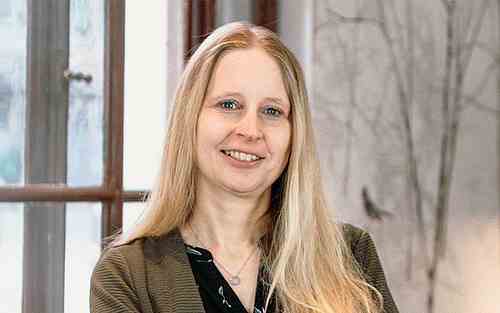ITM: Ms. Milcke, Amadeus360 is the first intelligent POS system in Germany that now also supports robot technology and automates the entire order and payment process. How did that happen?
Stefanie Milkke: As is so often the case, the trigger was a customer request. The Sausalitos chain has been our customer for a number of years and we work together very well and in a spirit of trust. When she approached us with this innovative project, we were immediately hooked. Of course we took care of the order and payment processing. This is exactly where we feel comfortable: We want to complete and further advance new and innovative projects with an interface to Amadeus360. We actively shape the future of gastronomy and help ensure that gastronomy will continue to stand on solid ground in the future. Thanks to our open interface culture, we can connect third-party technologies to Amadeus360 without much effort – that’s exactly what we did with the technology from Inores Robotics.
ITM: How exactly does the solution work and what benefits does it offer employees and customers in the catering industry?
Milkke: The ordering system is based on Amadeus360’s self-service technology. Restaurateurs can flexibly organize their service with the modules self-menu, self-ordering, self payment, pick-up and delivery enrich. In the case of a robo-cocktail bar, for example, it is primarily about ordering on site, but as a special feature not at the table but at the bar, with direct billing. The technical solution behind it basically looks like this: The desired items are automatically pulled from the standard menu – but of course new dishes and drinks can also be created. The digital menu then only defines which items should appear. As a result, prices, displays and availability are always up-to-date and bundled in one central location. The available quantity at the start of the shift can be stored via monitors in the kitchen or a configuration in the cash register. The intelligent menu automatically knows when items are sold out and need to be removed from the menu. The guest orders and pays, for example for the desired cocktail, in the order interface and thus sends the decisive signal to the cash register. The cash register forwards the order to the robotic control for processing and to the cash book, which is also connected. Would they robot used completely independently at a location, the location would then no longer even have to carry out a daily closing. The solution takes care of that automatically at the same time. The advantages, of course, lie in the savings potential of the resources that are usually far too scarce anyway, namely the employees in the service, at the bar and in the accounting. The waiting times for guests are falling rapidly. As a result, sales can be increased at lower costs and the restaurateur also creates an attraction for the guests.
ITM: The innovative technology is currently being piloted. How does the system work in practice?
Milkke: The pilot phase only started a few days ago and at the moment security is still the top priority for everyone involved. All project partners proceed very cautiously with optimizations in the direction of “performance” and “speed”. Or in simple words: the robotic arms are currently still moving very slowly on purpose so that no glasses are broken. So at the moment they are mainly used as an attraction. Gradually, their relieving effect on service and bar should also come to bear more and more. The functions are already fully developed. To be fair, it has to be said that, thanks to our open structure, these were also the easiest part of the whole project.
ITM: What opportunities do you see for digitization and the use of robot technology in gastronomy in the near future?
Milkke: I see a very big opportunity in digitization and robotization, especially for the catering industry, to automate tasks that don’t need people. The range of things that can already be automated is very large: Orders can be placed in the guest room directly by the guest via self-ordering or from home via Online order be given. For those who prefer to pick up the phone, there are now intelligent voice machines that can simulate the normal flow of conversation. In the kitchen, kitchen monitoring takes over order management and automatically distributes tasks to different stations. In addition, the first cooking robots can pre-cook 24/7 or just in time. There have been automatic dispensing systems at the bar for a long time and now there are also robo-bars that can take care of everything from taking orders to billing. In service, service robots bring food to the table or, as in Berlin, are now delivering pizzas to the street.
And in accounting, too, there is now a lot going on, from automatic cash register closing to automatic receipt acceptance and categorization. Of course, not every automation fits into every company. The more expensive the restaurant, the more the guest wants to be spoiled. But it is no longer true that only young and highly modern companies can use automation.

